Building Formal Collaboratives to Leverage Federal Funding
Stakeholders representing a range of interests are coming together as formal collaboratives in communities across the western United States to tackle complex watershed challenges. Building these formal collaboratives has its benefits, such as being able to take advantage of federal funding for river restoration and water management projects. But what does it take to build an effective coalition, and how does working as a formal collaborative help groups to leverage federal and other types of funding?
The four case studies below explore coalitions in Arizona, California, Oregon, and Idaho/Wyoming. What made these collaboratives successful and effective? Common threads include:
- Representation from a range of community interests
- Trust building through on-the-ground presence
- Active communication and coordination
- Shared understanding about the key issues
- Effective community outreach
- Access to unrestricted funding for staffing and capacity building
To learn more, scroll down to read the case studies or watch our roundtable interview with representatives from each of the case studies.
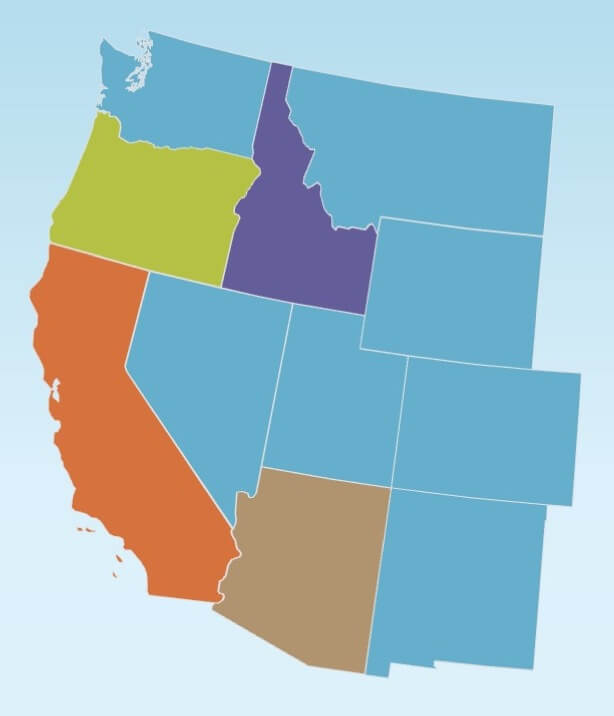
Explore the Case Studies
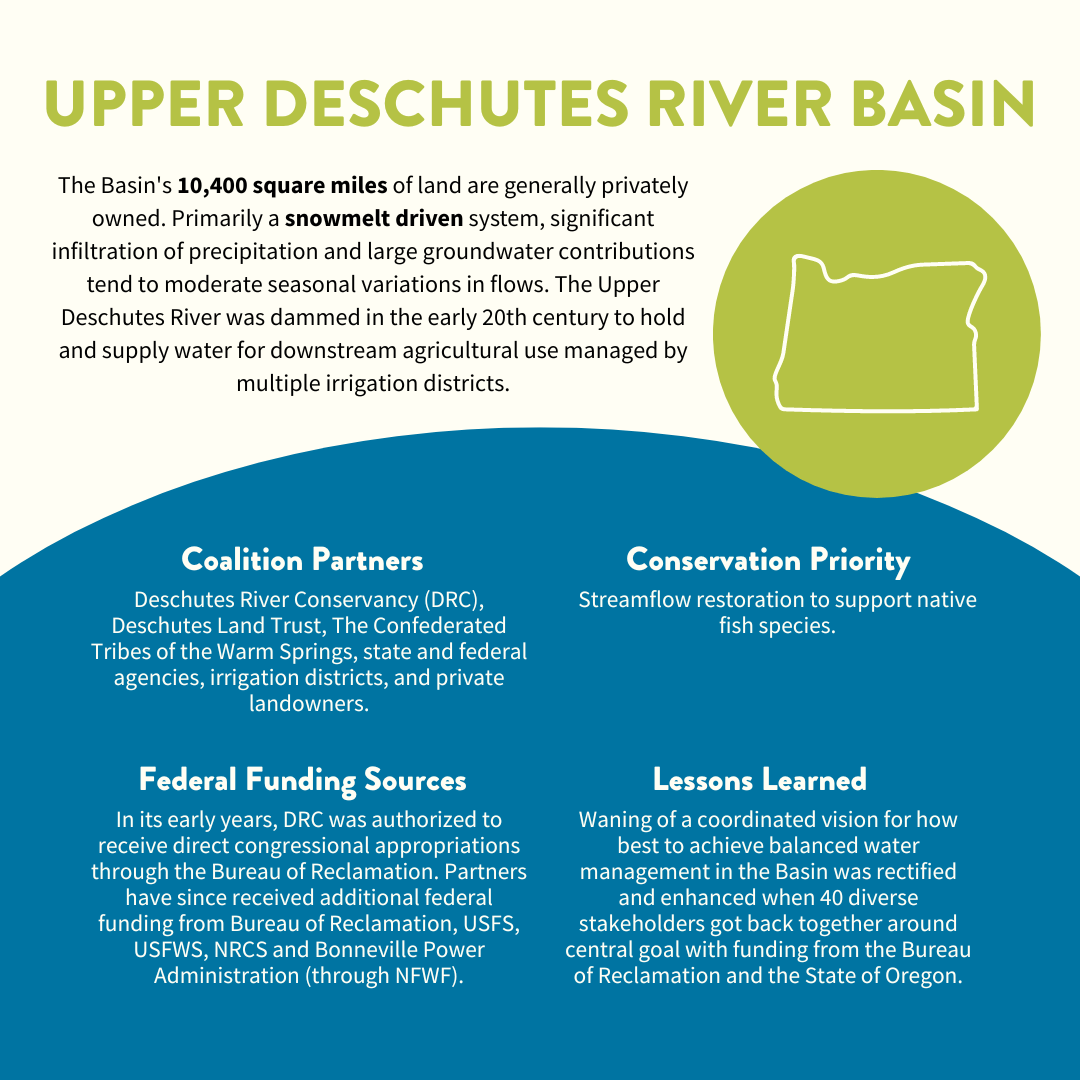

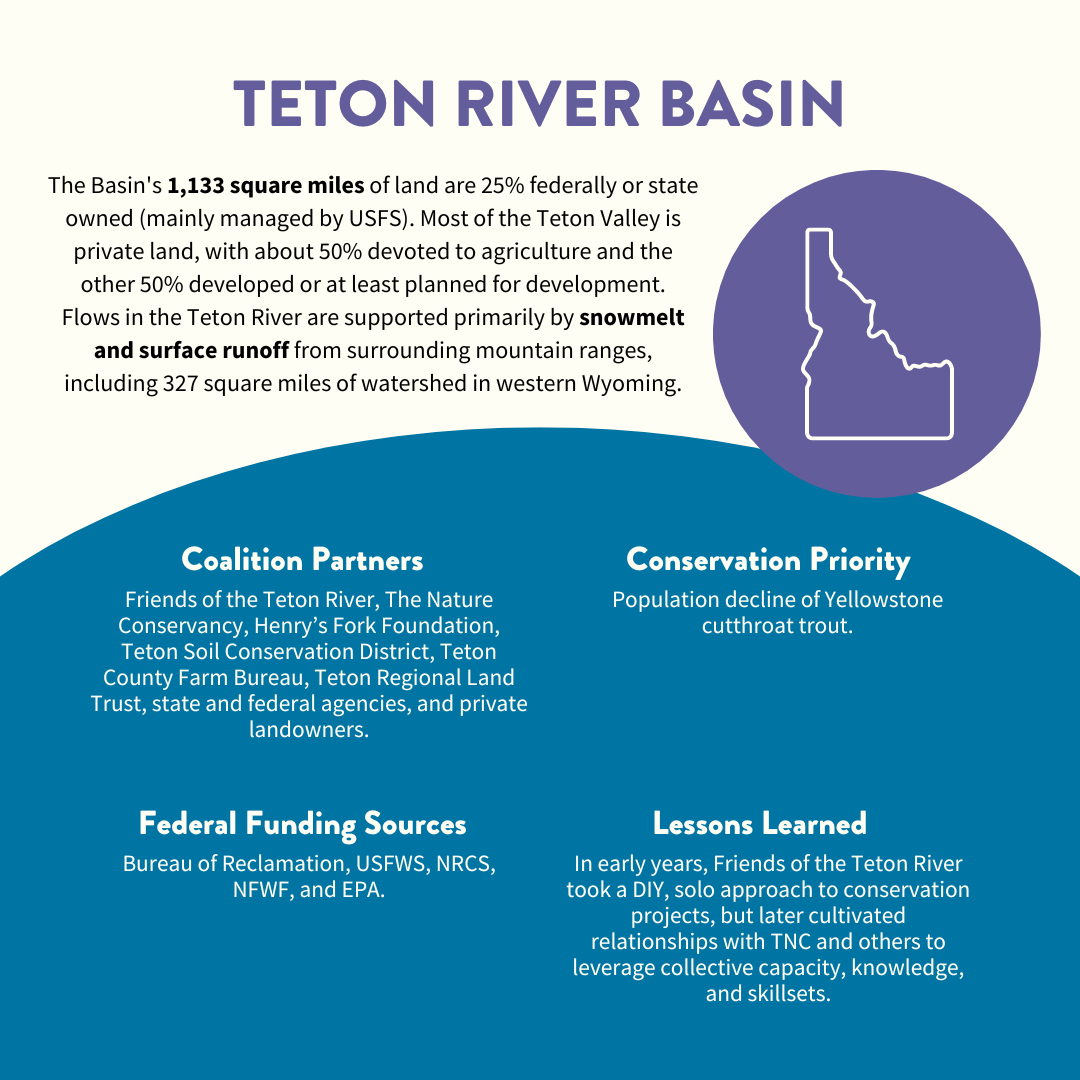
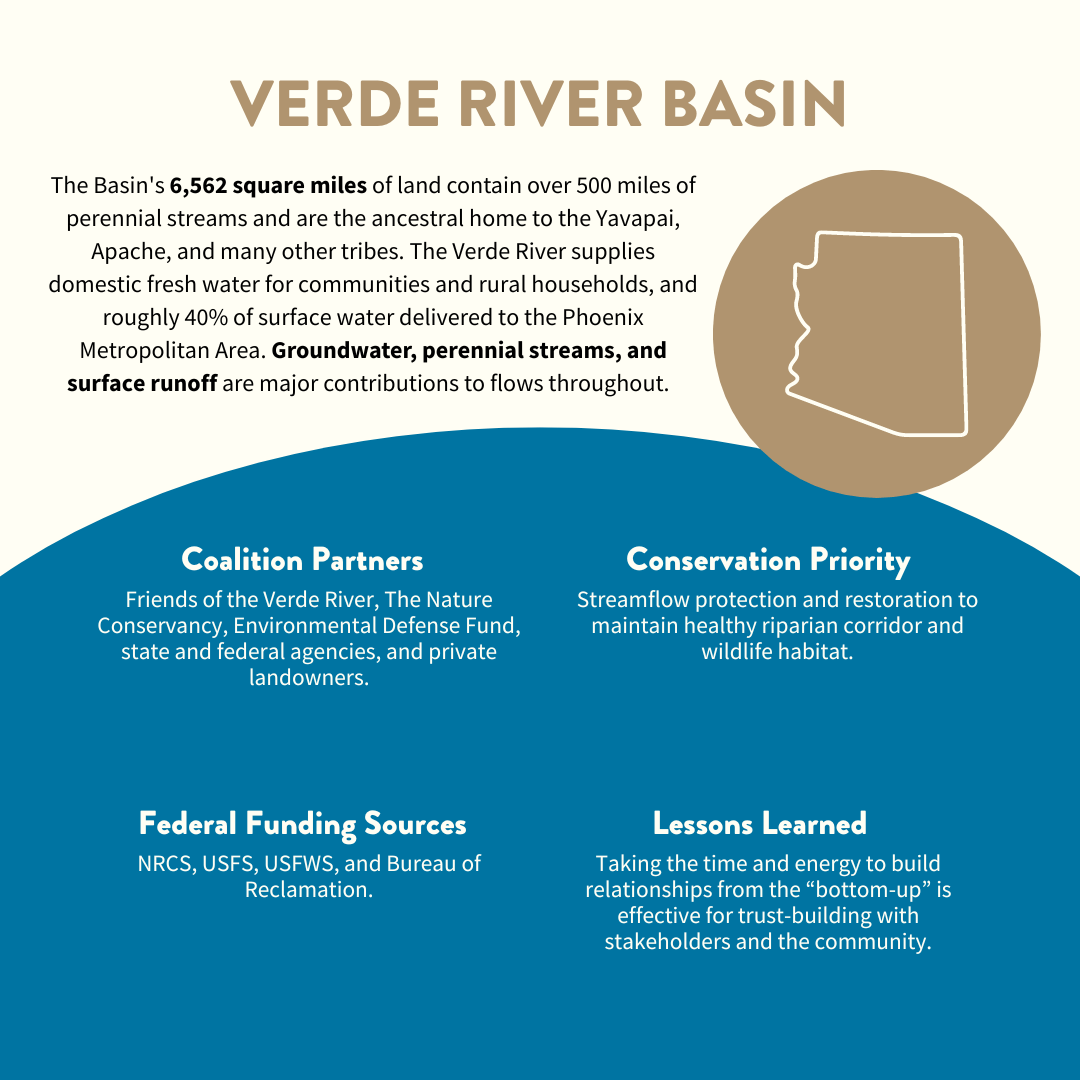
Meet Your Network Roundtable
Meet the people behind these collaboratives! Join Chelsea Silva, River Network’s Healthy Rivers Program Associate for a conversation with four individuals involved in building collaboratives to leverage federal funding for their rivers.
Nancy Steele (Friends of the Verde River), John Green (Gold Coast Resource Conservation District), Kate Fitzpatrick (Deschutes River Conservancy), and Amy Verbeten (Friends of the Teton River), speak with Chelsea about their successes, challenges, and lessons for others across the national network of water, justice, and river advocates in working collaboratively to access a variety of federal funding opportunities available for water and river projects across the US.
Jump to a specific section:
- 02:45 – What does successful collaboration look like?
- 11:28 – What are your biggest challenges in accessing federal and other types of funding?
- 21:56 – What’s one thing folks should know about making these collaboratives work? What’s one piece of advice for getting started?
Interested in Building a Collaborative in the West?
If you live in a Western state and your organization is interested in building a formal collaborative, now is the time! Reclamation’s Cooperative Watershed Management Program is aimed at helping diverse stakeholders to work together on finding local solutions to address their water management needs. This program is housed under the WaterSMART (Sustain and Manage America’s Resources for Tomorrow) programs and received $100 million through IIJA. Funding supports formation of a formal watershed group and development of a watershed plan, and groups are eligible for up to $200,000 with no cost share required. The next funding announcement will likely be released in early summer 2023.


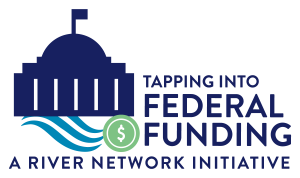 River Network is committed to supporting our network to understand, influence, and access the historic federal funding made available via the the
River Network is committed to supporting our network to understand, influence, and access the historic federal funding made available via the the 

